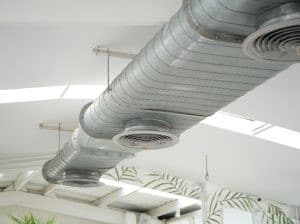
The aging process of the persons dear to us is such, that their demands will not stop changing. It is a hard thing to live through a plummet of their relatives in the line of independence for family members. The good news is that there are various senior care options on hand for individuals to get the help they need to lead a fulfilling life. But the plethora of choices makes it very much like complex navigation that would take much of your patience. This manual gives you the power to make smart choices, as it provides you with a variety of senior-care alternatives and takes you through the most important things you should consider when choosing the best for your loved one.
Understanding Your Loved One’s Needs: The Starting Point
The first point on the way to this destination envisages recovering the actual idiosyncrasies and wishes of your family members. Good and truthful communication between you and the people around you, the family members, is paramount. Assess whether or not they are physically and mentally capable of performing their daily activities, or if they need assistance with performing some of them. How many people need help with showering, clothes, or managing their medication schedule? Move on to the next sentence Is it something they feel confident with being on their own or will it be difficult for them to be alone? These questions will lead to the type of care, that best matches their standards of being comfortable and fitting in. Family talks are also indispensable sources of help during the process. Making imputations of siblings and further relatives seizes a decision-making scene the goal of which is to ensure that all people are on the same page and can put forward their views.
Exploring the Spectrum of Senior Care Options
The beauty of senior care today lies in its diverse options, catering to a range of needs. Let’s explore some common senior care solutions:
- Independent Living Communities:
These welcoming communities can suit seniors for either independent apartments or cottage living with shared spaces like communal dining, clubhouses, or recreational activities. Offering the ideal choice for seniors who cherish independence and socialize, independent living for seniors communities are places where seniors are encouraged to remain autonomous but at the same time get connected with their neighbors.
- In-Home Care Assistance:
For geriatric who appreciate their self-sufficiency and are always desirous of aging in their own homes, in-home care assistance is indeed a precious healthcare option. Certified healthcare workers have the knowledge to support such daily functions as taking a bath, donning clothing, giving medication, and preparing meals. In-home care may help with companionship, a little bit of housekeeping, and even transport service, enabling the seniors to welcome their lives and be safe at home. Companies of the words home care services Personnel provide services that are tailored to individual needs, and make sure seniors get the exact level of support they need.
- Assisted Living Facilities:
Equipped with comprehensive facilities and experienced staff, assisted living services are suitable for seniors who are looking for a balance between the maintenance of independence and some support provided for daily activities. Residents stay in private rooms while getting assistance with various daily issues, e.g. bathing, dressing, and taking medications. Assisted living facilities are places that offer communal dining, social activities, and onsite healthcare hence this brings a sort of community and the residents are safe.
- Nursing Homes:
Nursing homes are the most suitable living facilities for the elderly who require intense medical care and daily life care services. These centers are a place where serious medical supervision and competent nursing care are given, and they help in every activity one does daily.
Considerations for Choosing the Right Care
Conditionally, there is no puzzling solution when it comes to seniors’ drift by. The optimum solution will rather be specified depending on your dear one’s own needs, likes, and financial background. Here are some key factors to weigh when making a decision:
- Cost: Think about a variety of senior care opportunities, including the monthly fees, additional service rates, and at some point unexpected out-of-pocket expenses.
- Location: Family and friends together with home surroundings in most cases profoundly affect your loved one’s state of mind. Pick a nursing home that is within your convenient radius and preferably in the area where other family members involved in their care stay.
- Services Offered: Compare the services available with the option of elderly care to the particular needs of your loved one. Do they engage primarily in medication management, transportation, or physical therapy? Ensure the chosen option provides the specific services necessary for their well-being.
- Compatibility and Environment: The overall environment and atmosphere of the senior care facility or the personality of the in-home caregiver are crucial considerations. Prioritize a setting that feels comfortable and welcoming for your loved one.
Conclusion: A Fulfilling Life Awaits
Making the appropriate senior care decision is pulling you in when happiness and togetherness are in question. Though you need to comprehend your desires, examine the alternatives, and be careful about account factors, you will give your older parents the valuable care and support that will make them live pleasantly. Always remember that research is the key, family discussions are the cornerstone, and professional assistance will work hard like a common denominator to guide your financial future. Help your dear one succeed in living a joyful life in their old age with a well-reasoned choice made about their age care cruise.








